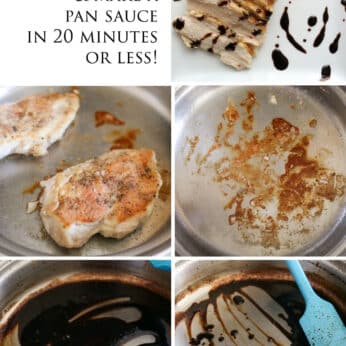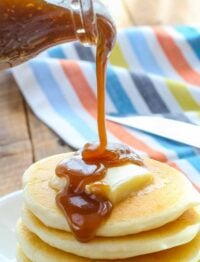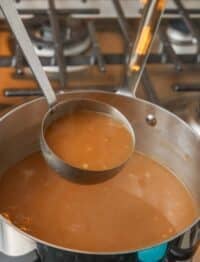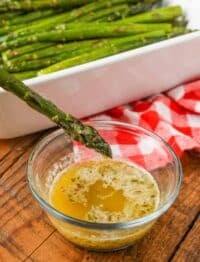When I first moved out on my own, and then later as young newlywed, the idea of spending even a few extra minutes or a few extra ingredients to create a sauce for a piece of meat or dish of pasta was beyond stressful for me.
I was not an experienced home cook and any extra steps in a recipe or needing to spend a few extra minutes in the kitchen caused me to frequently panic.
While I don’t consider myself to be an expert in all kitchen things now, I have learned a great deal over the past few years, mostly by trial and error. I also learned to ask questions.
Countless questions were asked of my friends and family who were more experienced in the kitchen than I was at the time.
I’ve learned a few things over the years and I have two simple tips for you.
- Keep trying. Pan sauces are worth it.
- Ditch the whisk for pan sauces and use a silicone spatula.
Follow the tips below for a no-fail method to cook chicken and create a perfect pan sauce in under twenty minutes!

How to cook chicken, deglaze a pan, and make a pan sauce in 20 minutes or less!
Ingredients
- 2 chicken breasts or thighs
- 1/2 teaspoon kosher salt
- ⅛ - 1/4 teaspoon freshly ground black pepper
- 1/2 cup all purpose flour brown rice flour will work as well
- 1 tablespoon olive oil
- 1/2 cup liquid: balsamic vinegar chicken broth, fruit juice or wine
- 1 tablespoon butter
Instructions
- Heat a heavy bottomed stainless steel skillet over medium to medium high heat. Test the temperature by flicking a few drops of water at the pan, if they dance across the surface and evaporate, the pan is ready. Add the oil and let it warm for a minute. If it begins to smoke, the pan is too hot, reduce the heat slightly before adding the chicken.
- While the pan is heating, pat your chicken with a paper towel to dry it slightly. Sprinkle the chicken generously with salt and pepper. Place the flour in a small flat bottomed bowl or plate and lightly dredge the chicken through it on all sides. Carefully set the coated chicken in the hot pan and then resist the urge to touch it for at least 3 minutes. Use a set of tongs to check and see if the chicken has browned, give it another minute or so if it isn't brown yet. Turn the chicken over and repeat. Place the cooked chicken on a waiting plate and lightly tent it with foil to keep it warm.
- Leave the pan with the little roasted bits of meat (this is called the "fond" - pronounced "fahn") on the stove and slowly add the liquid of your choice. Stir the liquid with a heat-proof spatula, scraping the bottom and sides of the pan as you bring the liquid to a simmer. When the bottom of the pan is smooth, increase the heat slightly and simmer for a few minutes, just until the sauce has reduced and thickened by about half.
- You will be able to run your spatula through the liquid and leave a wide trail when it is almost done. Remove it from the stove and test by tipping the pan and using a spoon to drizzle a bit of the liquid across the bare side of the pan. You want to see a line or drips like you would on a plated dish at a restaurant. (You can see a drizzle in my photos, but don't judge me for it. I don't claim to be a fancy food stylist!) Add the butter to the pan and swirl to melt it. Taste the sauce and adjust the salt as needed. When the sauce is finished, plate your meat and drizzle with sauce. Enjoy!






Kim Honeycutt says
Good information! Thanks! Pinned it!
Shawn @ I Wash You Dry says
I love making a pan sauce! Great tips here!
Nikki @Seeded at the Table says
Craftsy sounds like such a great resource! I'm so glad we live in a day when online classes and tutorials are available to make learning so much easier! 🙂
Anonymous says
I would use lemon and lots of it
Learn more says
I've been cooking peppers and onions in the skillet on the grill a lot lately. I'll have to add jalapenos next time. Yum. I like cooking bacon that way too, although hot fat + open flame adds a nice element of danger. I used to get flank steak, but my husband got me to try the carne asada cut from our local market, and I prefer it. Not sure if it's thin-cut flank or skirt (I'll have to ask), but it looks like this